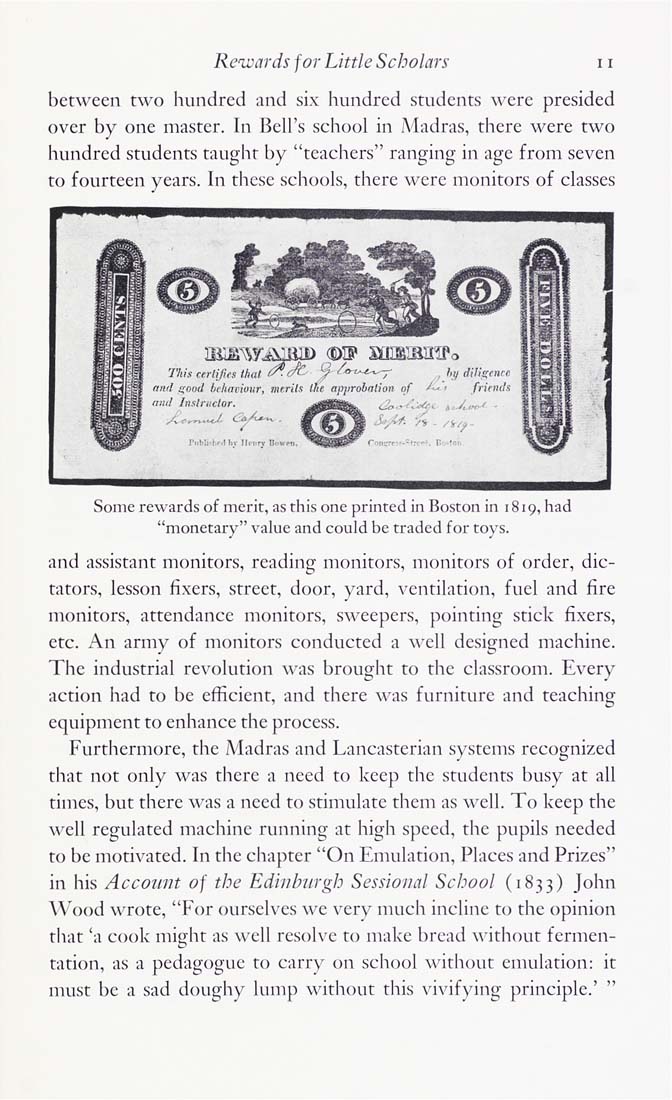Columbia Library columns (v.34(1984Nov-1985May))
(New York : Friends of the Columbia Libraries. )
|
||
|
|
|
|
| v.34,no.3(1985:May): Page 11 |

Rewards for Little Scholars between two hundred and six hundred students were presided over by one master. In Bell's school in .A'ladras, there were two hundred students taught by "teachers" ranging in age from seven to fourteen years. In these schools, there were monitors of classes ® tht approhation nf /■." frinuh Some rewards of merit, as this one printed in Boston in 1819, had "monetary" value and could be traded for toys. and assistant monitors, reading monitors, monitors of order, dic¬ tators, lesson fixers, street, door, yard, ventilation, fuel and fire monitors, attendance monitors, sweepers, pointing stick fixers, etc. An army of monitors conducted a well designed machine. The industrial revolution was brought to the classroom. Every action had to be efficient, and there was furniture and teaching equipment to enhance the process. Furthermore, the Madras and Lancasterian systems recognized that not only was there a need to keep the students busy at all times, but there was a need to stimulate them as well. To keep the well regulated machine running at high speed, the pupils needed to be motivated. In the chapter "On Emulation, Places and Prizes" in his Account of the FAinhiirgh Sessional School (1833) John AVood wrote, "For ourselves we very much incline to the opinion that 'a cook might as well resolve to make bread without fermen¬ tation, as a pedagogue to carry on school without emulation: it mu.st be a sad doughy lump without this vivifying principle.' " |
| v.34,no.3(1985:May): Page 11 |







